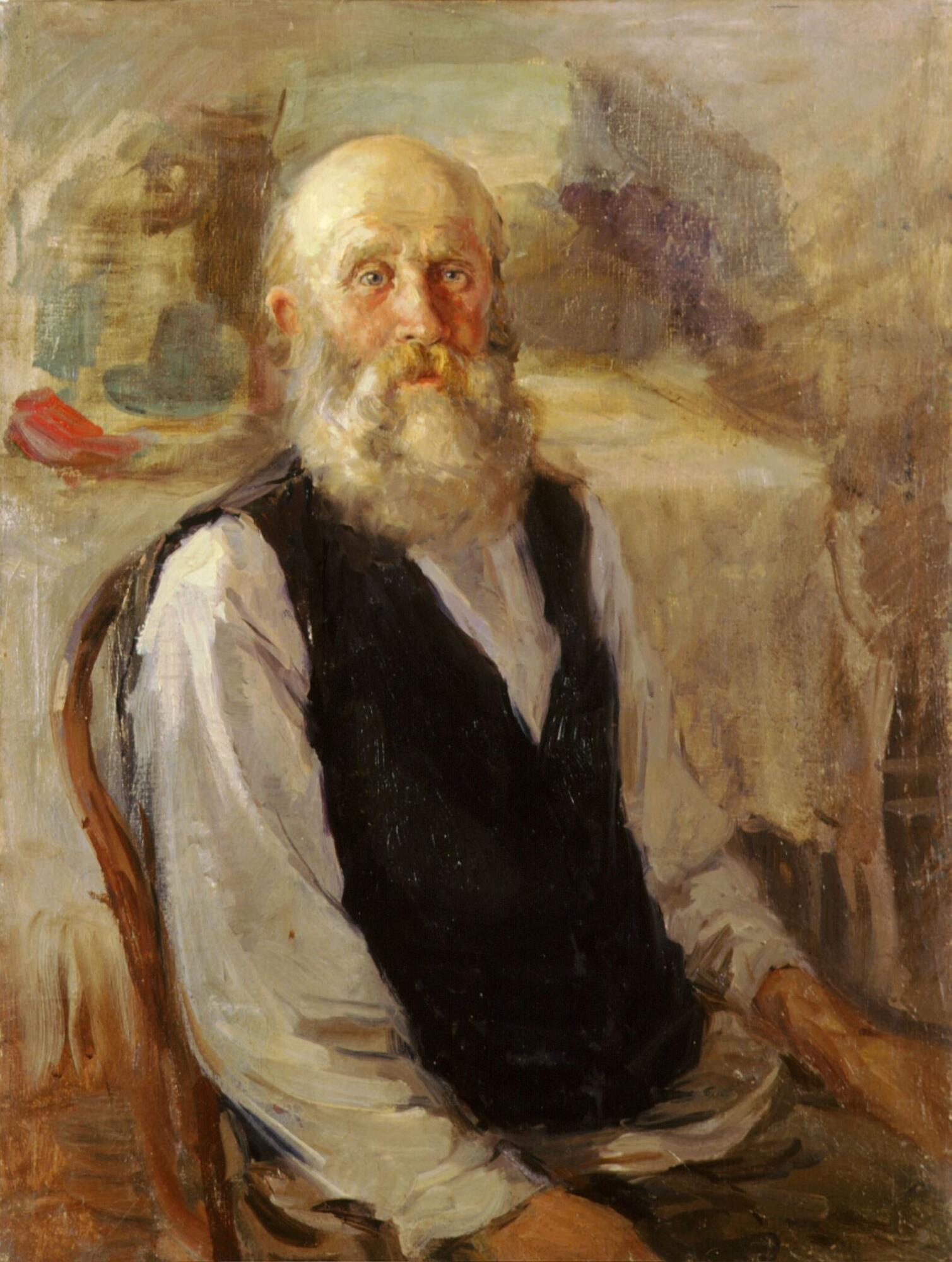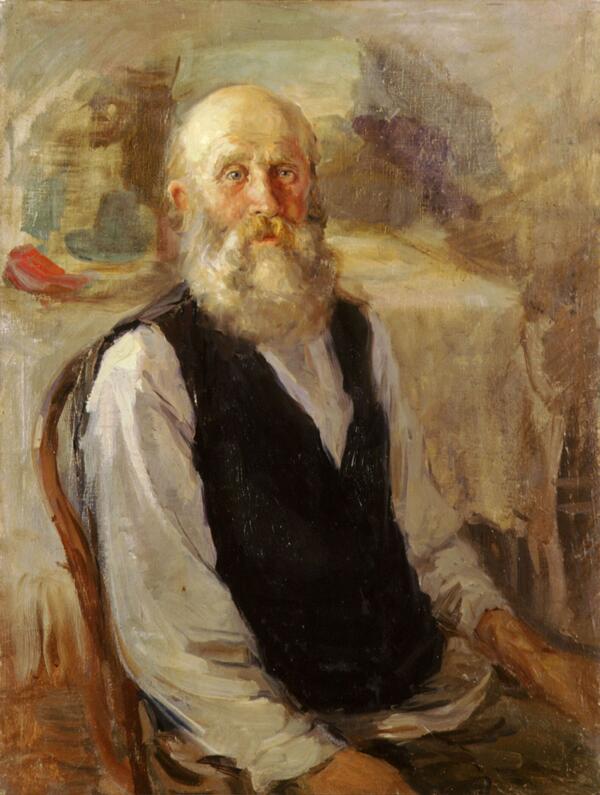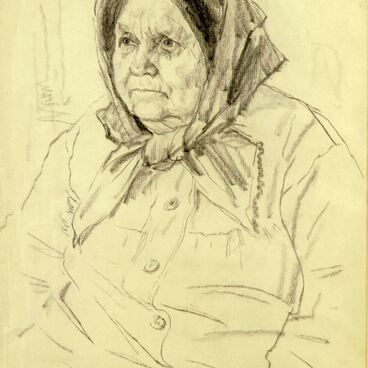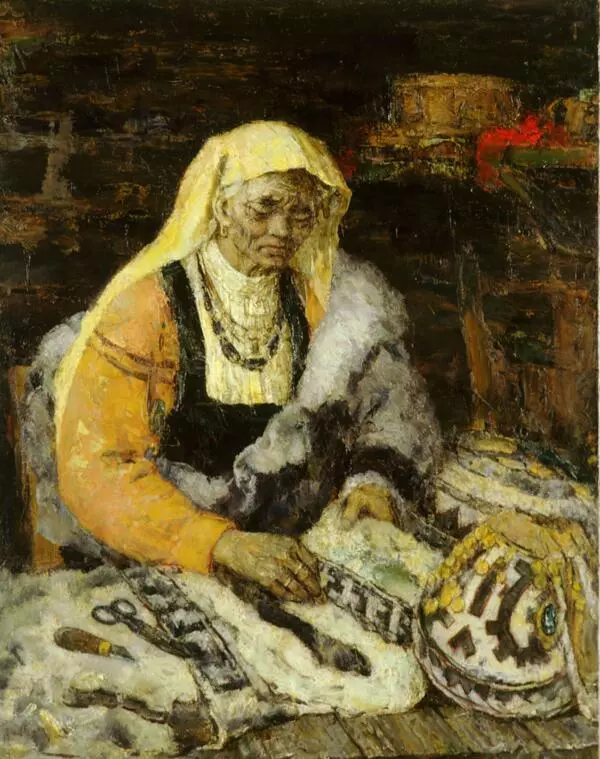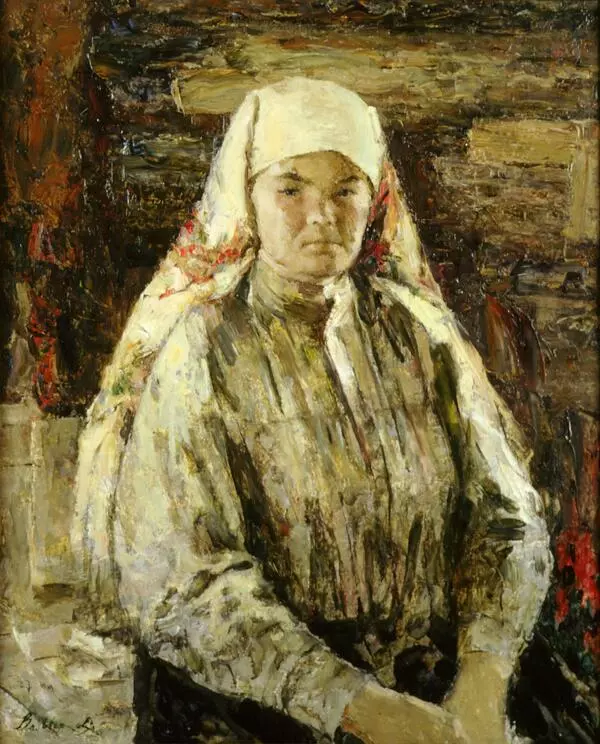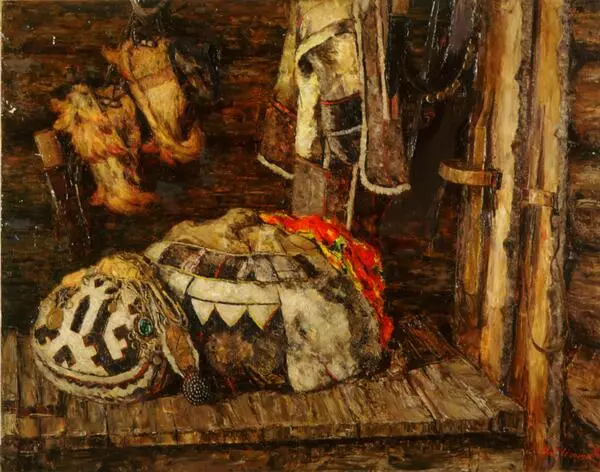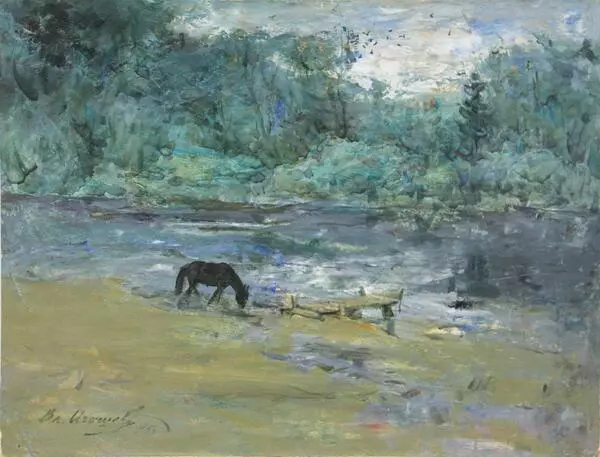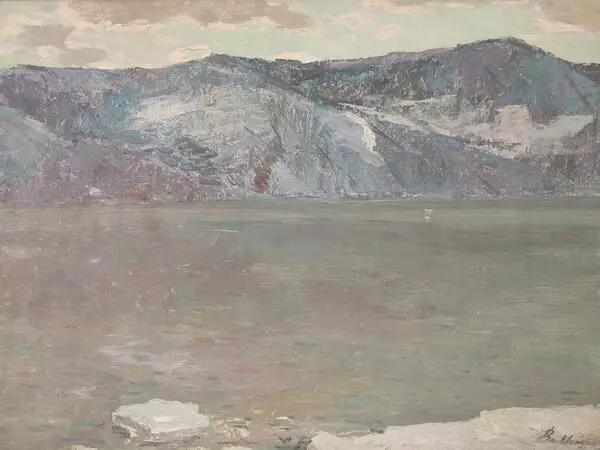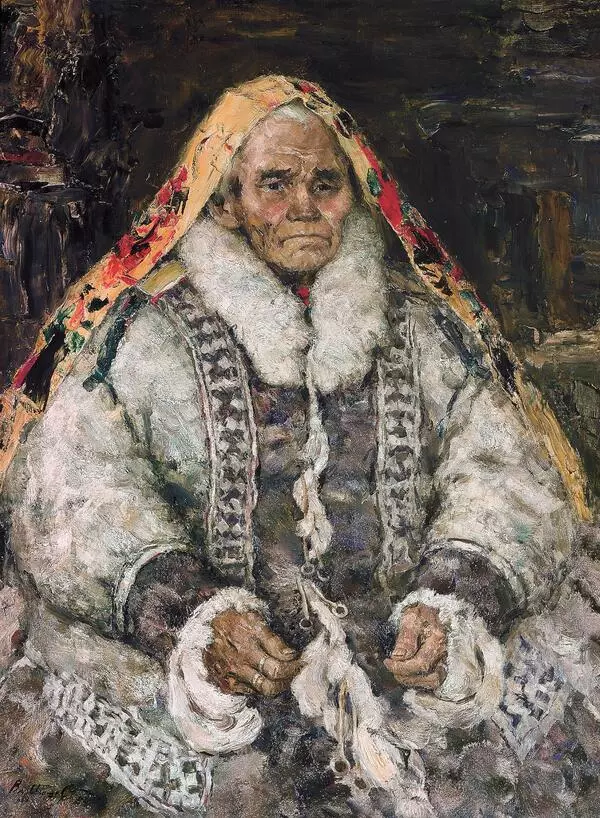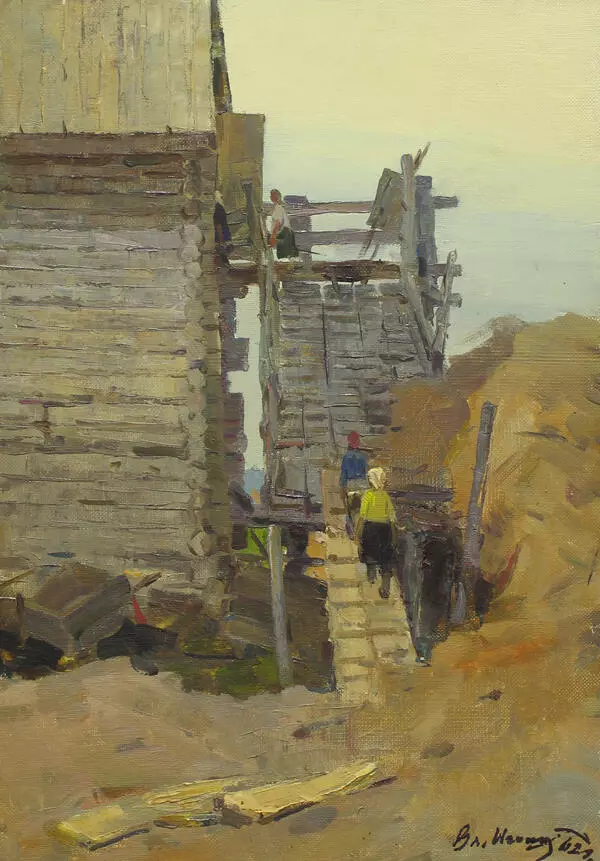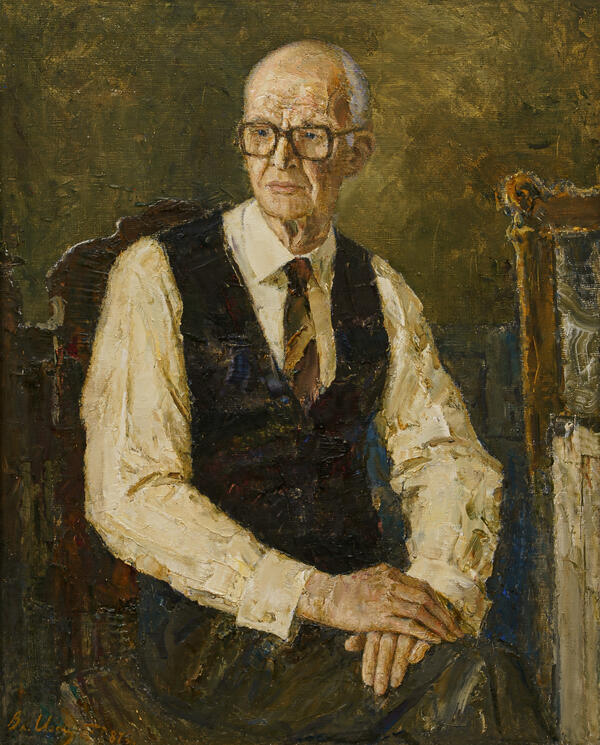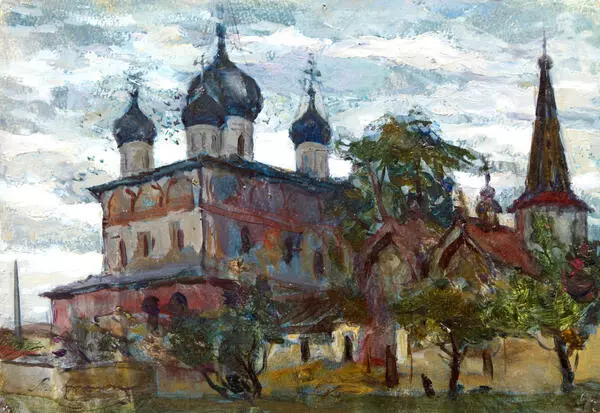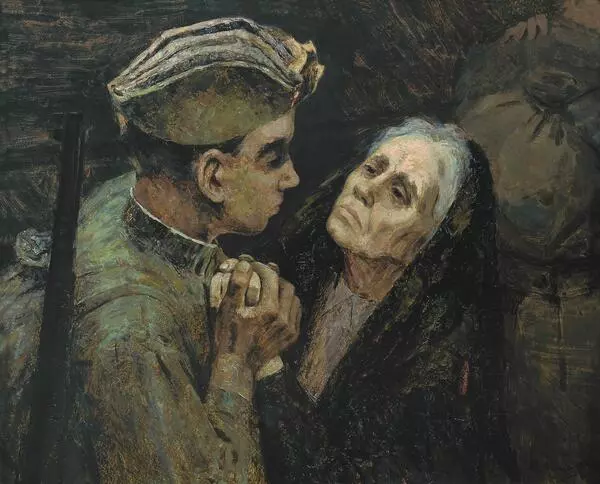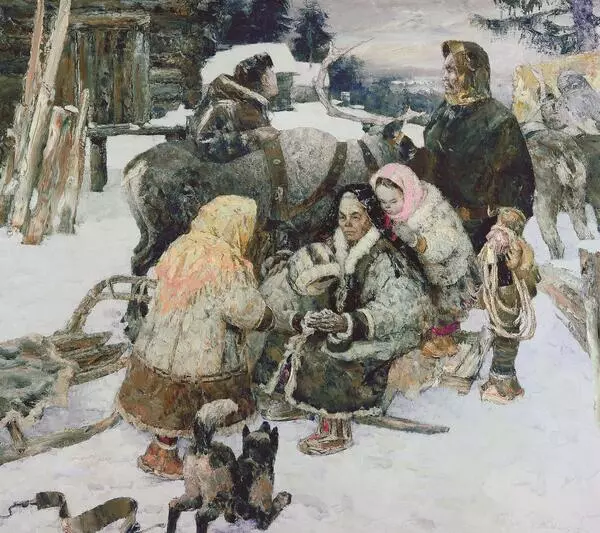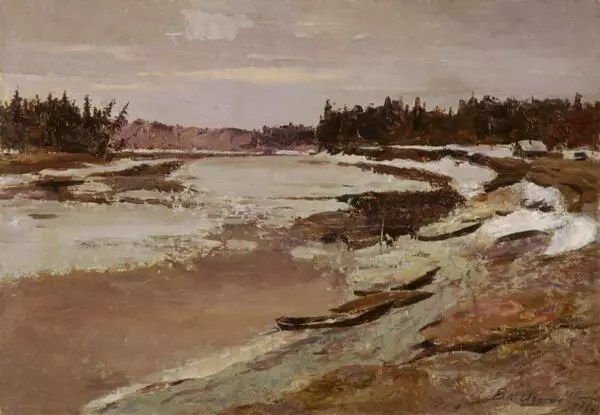Portrait of the artist’s father Aleksandr Igoshev was painted in 1948. At the time Vladimir Igoshev studied at The Surikov Art Institute in Moscow, where he was a student of a full member of the USSR Academy of Arts Georgy Ryazhsky.
Vladimir Igoshev recalled: ‘My father was the eldest of all brothers, and our house was bigger than the others. The families were big, with many children. People were occupied with arable farming. Everyone, both children and elderly people, were used to work. And people worked in all seasons, in winter and in summer, during hay-making and harvest. The guests arrived only on the days of the big feasts. Such remarkable images from the past come into my mind in connection with it! One day at Elijah’s Day a lot of guests visited us. Of course, most of them were our relatives. There was a lively feast with the men wearing holiday kosovorotkas and women wearing bright dresses and kerchiefs. A lot of starters and meals were on the table: fried meat and fish, aspic, a smoked leg, pickles and milkcaps in sour cream and a big fried goose in the middle of the table. All guests were strong and healthy; they were eating without hesitation. My mother and sisters added the food all the time and the father stolidly poured yellowish mead.’
Igoshev also described his home library: “In our house there weren”t just the books by Russian authors, there were also the church books. I remember two big hagiographic volumes, The Book of Psalms and a prayer book, which was always situated in the icon case behind the icons. There were a lot of magazines (Niva, The World Pathfinder) and an agronomic journal. The father was subscribed for them and bound them himself (my grandfather had bought a special bookbinding machine for it in Birsk).” The family used to spend long winter evenings with the head of the family telling stories and reading poems. He was literate and knew a lot of poems by Alexander Pushkin, Nikolay Nekrasov and Fyodor Tyutchev by heart. Aleksandr Igoshev taught his son a few poems by Nekrasov and some of Krylov’s fables. The future painter willingly declaimed them to the delight and approval of the guests.
Vladimir Igoshev recalled: ‘My father was the eldest of all brothers, and our house was bigger than the others. The families were big, with many children. People were occupied with arable farming. Everyone, both children and elderly people, were used to work. And people worked in all seasons, in winter and in summer, during hay-making and harvest. The guests arrived only on the days of the big feasts. Such remarkable images from the past come into my mind in connection with it! One day at Elijah’s Day a lot of guests visited us. Of course, most of them were our relatives. There was a lively feast with the men wearing holiday kosovorotkas and women wearing bright dresses and kerchiefs. A lot of starters and meals were on the table: fried meat and fish, aspic, a smoked leg, pickles and milkcaps in sour cream and a big fried goose in the middle of the table. All guests were strong and healthy; they were eating without hesitation. My mother and sisters added the food all the time and the father stolidly poured yellowish mead.’
Igoshev also described his home library: “In our house there weren”t just the books by Russian authors, there were also the church books. I remember two big hagiographic volumes, The Book of Psalms and a prayer book, which was always situated in the icon case behind the icons. There were a lot of magazines (Niva, The World Pathfinder) and an agronomic journal. The father was subscribed for them and bound them himself (my grandfather had bought a special bookbinding machine for it in Birsk).” The family used to spend long winter evenings with the head of the family telling stories and reading poems. He was literate and knew a lot of poems by Alexander Pushkin, Nikolay Nekrasov and Fyodor Tyutchev by heart. Aleksandr Igoshev taught his son a few poems by Nekrasov and some of Krylov’s fables. The future painter willingly declaimed them to the delight and approval of the guests.
